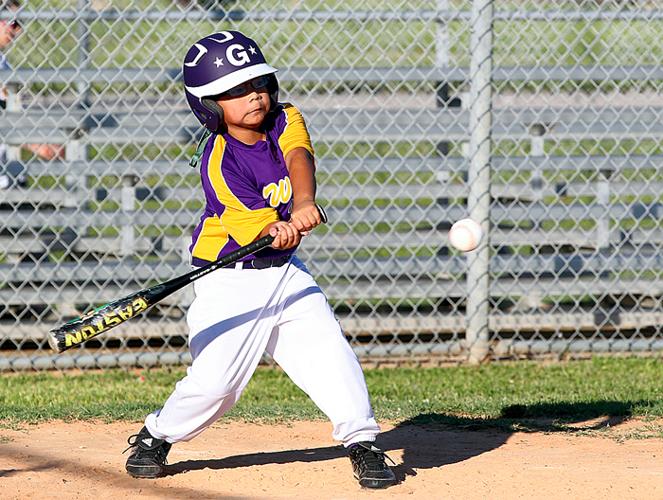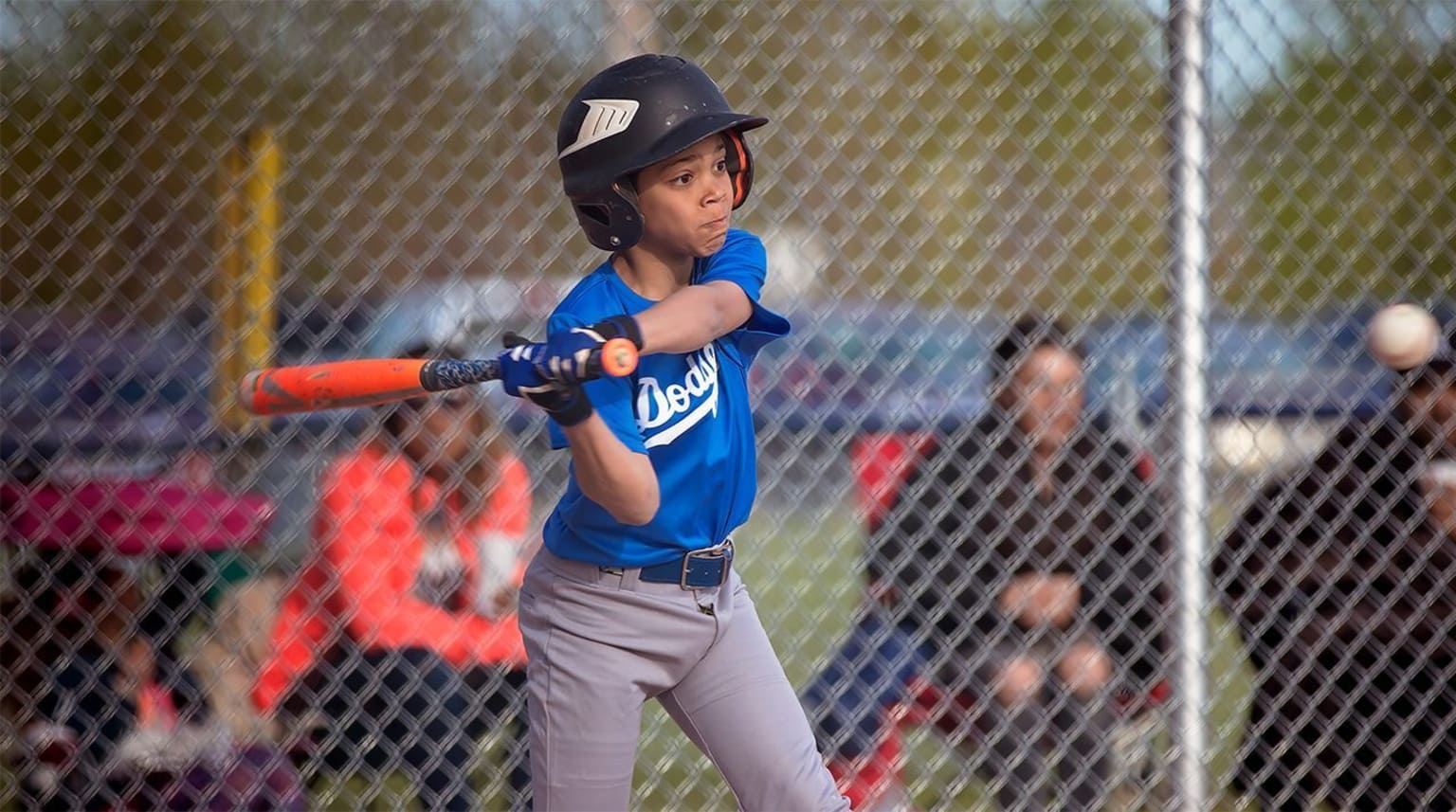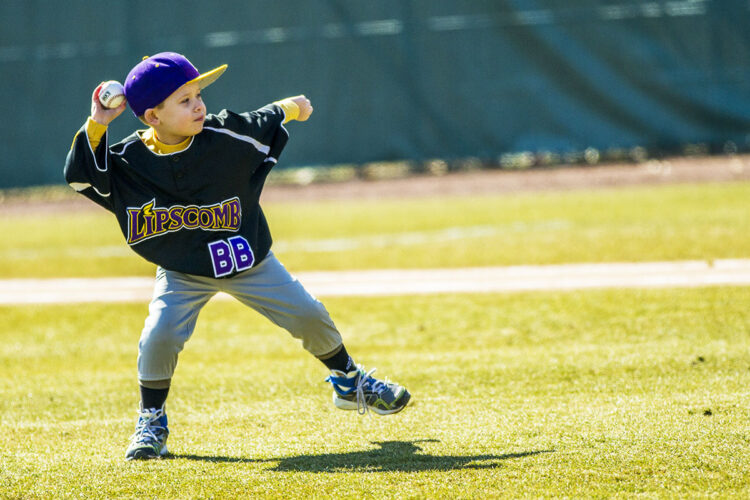Hello readers! My name is Mark Hertz and I’m excited to share my thoughts with you today on the popular question of how young is too young for kids to start playing baseball. As a former college and minor league player, and now a veteran coach of youth baseball for over 20 years, I’ve seen all ages and stages come out to the baseball field. There’s certainly a lot to consider when deciding if your child is ready to dive into this great sport. Read on for my guidance from experience on the ideal age to introduce America’s favorite pastime.
The best age for most kids to start playing organized baseball is around 5 or 6 years old. Age 5-6 tends to be an ideal time for introducing most young kids to organized baseball through casual rec leagues, lessons, and camps focused on safety and fun over competition. This allows their developing physical abilities and mental focus to slowly build sport confidence.
Physical Readiness
When evaluating if a young child is ready for baseball, physical abilities are perhaps the most important factor.
At ages 3 and 4, most children are still developing basic motor skills like running, throwing, and catching. Things like attention span, hand-eye coordination, and overall strength simply are not at the level typically needed to productively take part in organized baseball.
Around age 5-6 is when most kids start showing the physical potential to begin structured baseball activities. At this age, basic motor skills should be established and building upon, fueling the capability to follow instructions, run bases, catch, and throw at introductory levels.
I usually tell parents that if their child can smoothly catch, successfully throw about 30 feet, run the bases without falling, and pay attention for more than 10 minutes, they likely have the baseline physical skills to start organized baseball.
Safety Precautions
A major priority with beginning youth baseball players is maintaining proper safety precautions. Children under 5 years old often lack the bodily awareness, attentiveness, and development needed to avoid common injuries.
Before joining any sort of team or league, all players should be educated on fundamental safety rules. Parents and coaches must consistently enforce guidelines like no head-first slides, no throws until the ball is asked for, drinking enough fluids, always wearing helmets when batting, running slowly when told, etc.
Additionally, using softer baseballs, shorter distances/bases, and allowing closer adult guidance can aid safety for the youngest age groups first starting out.

Social and Mental Preparation
Being part of a baseball team, even at 5 or 6 years old, requires some degree of social interaction and mental focus which not all children have cultivated yet. Parents know their kids best when it comes to judging if they can handle listening to coaches, cooperating with teammates, and maintaining composure for a full practice or game.
In my experience, emotional regulation and team cooperation seem to kick in more naturally around age 6. But some 5 year olds can certainly still succeed with extra patience and support. Ensuring your child feels comfortable communicating any issues to you or their coach is essential.
Additionally, keep expectations realistic. Understand that setbacks, distractions, and less than perfect play is all part of the learning process at this introductory stage. Instill confidence and emphasize having fun above all else.
League Types and Time Commitment
When your child reaches physical and mental baseball readiness, there are a variety of league types suitable for first-timers aged 5-6. Community rec leagues focused on basics and fun are ideal. These usually involve 1-2 short practices per week and games every Saturday for an 8 week season. Games only last 2-3 innings so they maintain young attention spans.
Another option is intro lessons at local baseball centers or clinics. These teach fundamentals weekly in a low pressure setting without full games. Baseball day camps, even for just a week in the summer, also give aspiring young players field time focusing on basics.
Start with only 1-3 hours per week of organized baseball until your child proves capable of and motivated for additional time. Burnout is quite common if pushed too hard too young. Keep a close eye that pressure never sabotages the thrill.
Position Suitability
In both rec league games and basic practices, newbie players should rotate positions frequently to find what suits them best. However, certain positions do tend to align better with young players’ attributes.
Short infield positions like 2nd base are ideal starter spots for small, quick kids with growing coordination. First base builds confidence with a larger target to throw to while introducing defensive positioning. Outfield is perfect for free spirits who enjoy running around.
Pitching and catching are generally not introduced until age 8+ for safety and skill reasons at minimum. These positions demand advanced physical abilities along with mental acuity not common until older. Keep young kids 15 feet or closer when tossing balls. Developing catchers must first perfectly block and safely handle balls bounced to them.
While I believe age 5-6 is right for most to dip their toes into baseball through various leagues and low commitment training options, each child’s development and readiness differs. Some may thrive starting earlier while some may need to wait another year or two. Hopefully these collectively points provide helpful guidance as you decide when America’s beloved pastime should become part of your young one’s world.
Proper Nutrition and Hydration for Young Ballplayers
Proper nutrition and hydration are vital but often overlooked factors influencing a 5 or 6 year old’s capability to start playing organized baseball without burning out or risking injury through fatigue. At this active age of nonstop energy, young kids can easily end up dehydrated or lacking the balanced diet required to fuel their on-field performance.
Before all games and practices, kids should refuel with a snack and water. Fruit, whole grain granola bars, yogurt, and peanut butter sandwiches are great mini-meals approximately an hour beforehand. Always bring a labeled water bottle for frequent hydration breaks too. Inform coaches immediately if your child exhibits signs of dehydration like dizziness or severe cramps.
To build resilient young ballplayer habits over the long term, be sure your child’s daily diet provides proper carbohydrates for working muscles, lean protein for growth and repair, bone-strengthening calcium and Vitamin D from dairy products, iron and anti-inflammatories from leafy greens, plus healthy fats, fiber and antioxidants. Discourage excessive junk food and sugary beverages which can inhibit focus during games.
Eating too much right before activity can also cause upset stomach. However allowing sufficient fuel and hydration prior and throughout practices and games gives emerging players energy necessary to learn skills safely. Developing properly balanced eating with adequate vitamins and minerals establishes lifelong healthy baselines protecting against illness and avoidable exhaustion.
Age-Appropriate Goal Setting
With your 6 year old beginning their baseball journey through various rec league and introductory training options, it’s essential for parents and coaches to establish age-appropriate goals focused more on exciting self-improvement rather than strict results. Especially at this young age, tangible success should be achievable to fuel a budding athlete’s passion.
Examples of measurable yet fun goals to discuss with your child include consistently hitting the ball off a tee, catching X many fly balls or grounders in a game, learning proper throwing grip and motion, running the bases without falling, being able to articulate at least 5 basic rules of baseball, high-fiving all teammates every game, listening successfully to coach instructions for 5 minutes straight, or making a new friend at practice.
As kids accomplish these goals, even bigger yet still realistic ones can be added like hitting pitches off a coach, catching pop flies, striking out fewer batters while pitching, hitting particular spots when throwing, stealing bases without errors, describing how outs occur, offering peers encouragement whenever someone makes a mistake during a game, and more. Successfully achieving such goals generates tremendous excitement and hunger for continuing skill progression when paired with your enthusiastic praise.

Avoiding Burnout Through Cross-Training and Seasonal Rest
While many ambitious young athletes hate being away from sports they enjoy, allowances must be made to avoid physical, mental and emotional burnout – especially for 5-6 year olds just beginning to embrace the passion of baseball through multiple weekly commitments. Mandating at least 1-2 offseason months per year away from baseball can work wonders for restoring focus, energy, and injury resilience.
Supplementing baseball with school sports, family activities, or completely unrelated youth programs also helps avoid feelings of playing the same sport constantly. Well rounded childhood development through music, art, community service, reading, educational summits and more creates balance while providing mental stimulation aiding concentration capabilities crucial on the diamond.
When bodies and brains remain perpetually drained by a singular focus, frustration with impediments to improvement can arise more rapidly. Dabbling in diverse activities during downtime from baseball maintains motivation over the long run. Kids witness firsthand how wider perspectives translate into performance gains across every endeavor. With patience and creativity, burnout gets prevented so baseball love endures.
Promoting Family Involvement and Bonding
Starting your young child in organized baseball shapes up as a tremendous opportunity promoting family involvement and deeper bonding through shared interests beyond the home or school. Attending your kid’s practices and games offers a glimpse into their blossoming persona you rarely witness. Observing interactions with coaches and peers reveals personality aspects emerging athletics environments draw out.
Cheering victories, of course, makes for proud moments. But supporting children through adversity and inevitable struggles proves particularly precious for fortifying family ties. Sport setbacks test resilience; witnessing loved ones model helpful behaviors teaches perseverance. Expand car rides and meals into free talk fostering trust. Dissect game scenarios to develop analytical abilities. Balance patiently explaining mistakes made with expecting accountability.
Assign ancillary roles letting siblings feel included too like assistant gear organizer, treat supplier, car clean-up crew. Soon they’ll yearn following similar athletic paths and reap comparable growth benefits. Between developing young bodies, impressionable team dynamics, and unpredictable games lies enriched understanding as parents and deepened sincerity as a family.
Instilling Grit and Overcoming Early Discouragement
Inevitably when first stepping on the baseball field around age 5 or 6, young kids will make mistakes, struggle with skills, and sometimes get disheartened. Striking out, dropping fly balls, or throwing inaccurately are all part of the early learning curve. As a coach and father of two baseball-loving boys, I’ve seen tears of frustration flow right there in the dirt plenty of times.
My advice? First, remind new players that even the very best batters only successfully hit the ball 3 or 4 times out of 10. Errors just mean you’re getting better through identifying areas needing more practice. Share stories of MLB greats struggling early on, like renowned hitter Ted Williams not making his high school team at first! Then set mini-achieveable goals, like simply making contact with the ball off the tee or accurately tossing to a partner 5 times in a row from 10 feet away. Baby steps build confidence, resilience, and grit.
As for direct encouragement, I remember a skinny 8 year old named Timmy ready to quit after a hard first season. I pulled him aside and said, “I strikes out Babe Ruth 1,330 times but he never quit. I see your passion – you have what it takes if you decide this sport is for you. Why don’t we stay late next practice and work together?” Now Timmy is an admired high school shortstop. Instilling grit is often best done through personal attention.
Promoting Great Sportsmanship Early On
The rise of poor sportsmanship, nasty competitiveness, and entitled attitudes sadly permeates even youth sports nowadays. Right from the start at ages 5-6, I believe coaches and parents must emphasize respect, integrity, and the spirit of games themselves.
Simple yet consistent messaging works magic over time. Before and after every practice and game, call the kids together to highlight examples of great teammates that day. Hand out wacky superlative awards like “Best Hustler” or “Comeback Clinician” for praising perseverance and positivity. Make them chant corny mantras like “Attitude of gratitude!”. It may feel silly but plants seeds sticking with impressionable young minds.
I also share stories of former problematic players transformed by focusing more on supporting others than themselves. Like Jamie, a naturally gifted hitter who sulked when struggling teammates caused losses. We made Jamie a “buddy” to shy new kid Lucas who Jamie had to teach basic skills to. Quickly Jamie felt invested in Lucas’ improvement and was soon cheering those messy success moments louder than his own triumphs!
Creative Incentives Spurring Skill Development
In instructing everything from tee-ball basics to elite travel pitching, I’ve seen no tactic motivate quite like creative incentive programs spurring friendly skill development competition. They inspire young kids to employ grit conquering fears, strengthen problem area abilities through reps, and bond via peer collaboration.
For intro levels, we printed sticker sheets with 10+ baseball achievement boxes like “Hit ball off tee 3 practices in a row”, “Fielded 5 grounders cleanly” or “Perfect throwing stance and motion”. Whenever they accomplished a mini-goal in practice I or assistant coaches immediately marked the box and yelled our praise. Kids loved visually tracking progress and raced filling their sheet first to win bubble gum packs. Unexpected little rewards prompted massive engagement.
Another classic incentive we still use during preseason involves a huge soft plastic baseball. For every 30 successful pitching machine swings a player reaches, they get 1 signature spot to try “popping” the big ball at season end party by swinging their bat full force! Visualizing that rewarding moment keeps 8 years olds voluntarily extending batting cage time for months achieving hundreds of quality reps, believe me!
Coaching Techniques Maximizing Development
Even well-intentioned volunteer rec league coaches often utilize ineffective outdated coaching techniques sabotaging young player improvement. Research shows tactics maximizing development emphasize 1) physical literacy 2) decision-making skills 3) variable, game-realistic practice scenarios boosting engagement.
Think adding obstacles during dribbling drills not just soccer scrimmages. Focus batting practice on angles and trajectories, not just hitting straight pitches. Defensive slide, pivot and recover fielding complexes rather than routine grounder repetition.
These force dynamic body control, sharp mental focus, and instant adjustment capabilities directly transferable to live games. We structure whole practices now on first establishing proper technique and safety, then applying skills in challenging hypothetical match situations the last 30 minutes promoting sharpness. Kids clamor tackling the “problems” we throw their way inventing their own solutions.
See, at ages 5-6 especially in beginner baseball, predictable repetition creates capability. But unpredictable application in environments supporting creativity, risk-taking and failure builds expert performers through forced adaptation. Slick coaches foster freedom first, then offer feedback so kids connect lessons to elevated individual purpose beyond sports. That’s the truly beautiful development.
Frequently Asked Questions
What are signs my child is not yet ready for organized baseball?
Common signs include inability to consistently catch thrown balls, difficulty throwing the ball 15+ feet, distraction after less than 10 minutes of activity, failure to follow simple instructions, fear of the ball, and lack of essential motor skills like running without falling.
Are tee-ball leagues a better introduction than coach-pitch leagues?
For the majority of beginning 5-6 year olds, yes. Tee-ball allows them to slowly develop hitting mechanics and confidence at their own pace with a batting tee holding the ball steady. Coach-pitch can overwhelm kids initially through increased performance pressure.
How can I instill proper baseball etiquette in young kids?
Start teaching basics like raising their hand to speak, not interrupting others, proper pre- and post-game rituals like handshakes, and sportsmanship cheers. Routinely praise kids who display good listening, patience, self-control, cooperation, positivity, and respect for all.
Are there any safety equipment requirements beyond a helmet for my 6 year old?
Make sure your league provides “core protective gear” for bats and balls impacting the torso. This includes chest plates, heart guards, jointed groin/hip guards, and often shin guards. Also ensure helmets fit snugly with protected ear coverage.
What should my initial role be as a baseball parent?
Focus on fostering love for the game itself first and foremost. Provide plentiful encouragement and refrain from criticism. Set expectations realistically then let coaches guide skill development. Transport them to practices/games reliably and help them properly warm up beforehand at home. Volunteer to assist the coach when possible for better understanding of lessons.



Pingback: What is a Double Play (DP) In Baseball? - Baseball Boom
Pingback: How Much Does it Cost to play Little League Baseball? - Baseball Boom
Pingback: What Size Baseball Glove Should a 9 Year Old Use? (GUIDE) - Baseball Boom
Pingback: How Competitive Is Youth Baseball at Ages 6-7? - Baseball Boom
Pingback: What Age Can Kids Start Playing Organized Baseball? - Baseball Boom